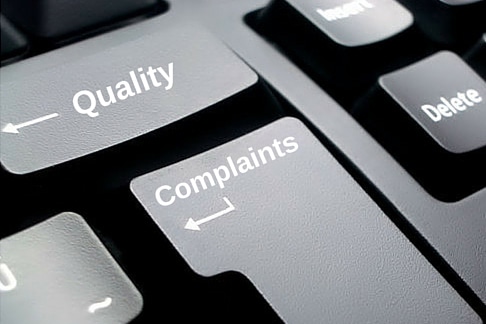 I recently read statistics that stated customer complaints traditionally fall into the top three areas for Form 483 observations from the FDA. “Wait,” I said, “that just can’t be correct!” With all the quality control that goes hand in hand with medical device manufacturing, how could there be so many customer complaints?
I recently read statistics that stated customer complaints traditionally fall into the top three areas for Form 483 observations from the FDA. “Wait,” I said, “that just can’t be correct!” With all the quality control that goes hand in hand with medical device manufacturing, how could there be so many customer complaints?
Unfortunately, FDA’s CFR 21.820.198.C gives medical device manufacturers very little wiggle room. It clearly states “ANY complaint involving the possible failure of a device, labeling, or packaging to meet any of its specifications shall be reviewed, evaluated, and investigated unless such investigation has already been performed for a similar complaint and another investigation is not necessary.” The ISO 13485 definition of complaints is very similar to the FDA’s as well.
In the case of any FDA audit of your organization, it is very likely the FDA inspector will review your complaint files and could easily take a strict interpretation of their definition. This means every time a company receives notification that there is a problem with their product, no matter what the reason for the complaint, at a minimum it has to be documented and investigated. Even the return of the device my pet chewed on and no longer is working needs to be documented. It doesn’t matter if the complaint is valid or not, it still needs to be documented and investigated.
Depending on how well your quality complaints have been documented, analyzed, and evaluated, will probably determine how much time the inspector will spend going through all your complaints. Fortunately for my pet, from a reporting standpoint he will not end up with a FDA record. Part 803 only requires manufacturers that have received complaints of certain device malfunctions, serious injuries, or deaths need to notify the FDA of the incident.
The best way to reduce FDA complaint inspection time is by implementing an enterprise wide complaint management process. In order to efficiently analyze each and every complaint that comes in, it must be an integral part of every medical device manufacturer’s overall business and quality strategy. It is essential in identifying potential quality issues across your entire enterprise and helps you with continuous improvements and preventing additional problems from occurring in the future.
Since complaints are a key source of quality information, integrating your complaint process with your quality system enables a medical device manufacturer to quickly identify quality problems. By analyzing complaint and quality trends a company can identify opportunities for design improvements and quickly issue the appropriate engineering changes. The impact of poor product quality can be far reaching for every manufacturer. Just consider the costs for nonconformance, deviations, rework, scrap, returns and the cost associated with expensive field corrections and product recalls. Now combine this with your administrative costs and any lost revenue and decreased customer satisfaction levels and we are talking big dollars.
Handling customer complaints is an integrated part of iBase-t’s Manufacturing Operations Management (MOM) system and allows you to create an enterprise wide, closed-loop quality and customer complaint management system for tracking all complaints and other non-conformance issues. By automating all quality and complaint related tasks, including non-conformance, deviations, audits, and change management, iBase-t’s MOM system makes it easier to comply with FDA and ISO rigorous standards.
From a strategic perspective, a MOM system provides a central hub for all the information required to manufacture a medical device. It makes all the systems and processes more visible and integrates every step of the manufacturing process. MOM enables your employees to do their jobs more efficiently and allows management to make better-informed, real-time decisions. The end result is a leaner, more efficient organization where employees feel empowered to get their jobs done and management has the information it needs to direct more dollars to the bottom. Control your costs and make your devices better while meeting regulatory requirements for a closed-loop quality management system with MOM, from iBase-t.



